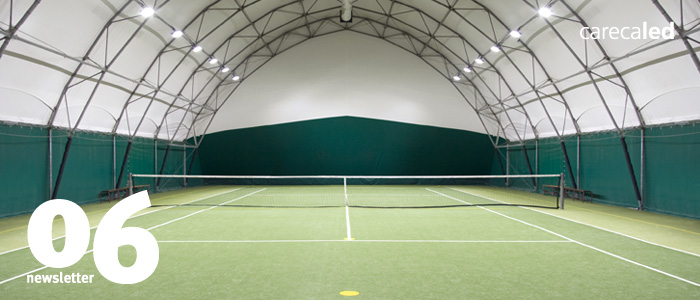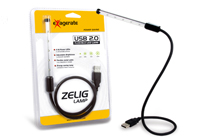Presentation Image

Newsletter
New record for Carecaled solutions that brings in Italy the first tennis court illuminated by LED technology lamps, which is also one of the few in the world.
Twenty 108Wh ZHT4 LED lamps have replaced ten 400Wh traditional HID lamps, ensuring an average illumination of over 320lux with less than 2500Wh power consumption. The previous system only reached 200lux with a power consumption of over 5000Wh. This means halving the energy costs with a considerable illumination improvement, besides lowering its environmental impact.
 Carecaled enriches its catalogue with a new innovative modular LED lighting solution for of sport facilities and not only, which combines energy saving, reduced glare and low maintenance costs.
Carecaled enriches its catalogue with a new innovative modular LED lighting solution for of sport facilities and not only, which combines energy saving, reduced glare and low maintenance costs.
This modular lighting system can be used for professional applications, sports facilities, harbours, parking areas, camping grounds. Outdoor illumination for buildings, monuments and churches. Lighting for industrial buildings, working and emergency lamps.
Besides the advantages of LED technology, ZHT4 provides great light uniformity and extreme flexibility in orientation and beam aperture. It is also very easy to install.
A recent research has discovered that they can cause inflammation if placed at less than 30cm from us
 After a survey on electromagnetic fields generated by new energy saving bulbs, the Swiss Federal Office of Public Health warned not to approach closer than 30 centimeters to prevent damages to health.
After a survey on electromagnetic fields generated by new energy saving bulbs, the Swiss Federal Office of Public Health warned not to approach closer than 30 centimeters to prevent damages to health.
The energy saving lamps have a transformer which emits electric and magnetic field at low and medium frequency that can generate electrical currents in the body which, from a determinated intensity, can cause inflammation of nerves and muscles. In the past the problem of pollution has been raised because they also contain a small amount of mercury (less than 5 milligrams) that in case of breakage of the bulb can airborne. Furthermore, low energy light bulbs with fluorescent tube, under certain conditions, may let through a small amount of ultraviolet rays; in that case at less than 20 cm and after a long exposure, can not be excluded skin rashes.
 Zelig USB Lamp is a USB Led lamp that allows to use your Notebooks in low light conditions, illuminating the keyboard and reducing the eyestrain. The lamp is powered by the USB port and through the flexible metal cable it can be oriented as desired. A soft touch button allows you to adjust the light intensity on 3 different levels. Zelig USB Lamp is light, compact, and environmentally friendly. Thanks to LED technology its power consumption is really low and its life cycle is higher than 50.000 hours.
Zelig USB Lamp is a USB Led lamp that allows to use your Notebooks in low light conditions, illuminating the keyboard and reducing the eyestrain. The lamp is powered by the USB port and through the flexible metal cable it can be oriented as desired. A soft touch button allows you to adjust the light intensity on 3 different levels. Zelig USB Lamp is light, compact, and environmentally friendly. Thanks to LED technology its power consumption is really low and its life cycle is higher than 50.000 hours.

